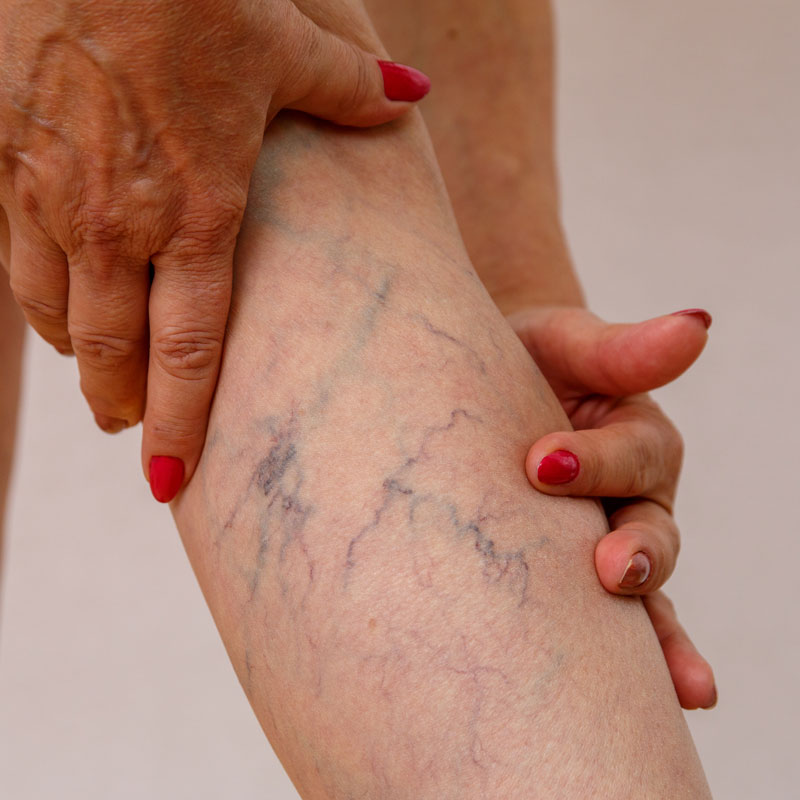Varicose Veins
Addressing Varicose Veins and Their Health Impacts
Varicose veins affect countless people across the United States. These enlarged, twisted veins usually appear on the legs and can cause discomfort, pain, and aesthetic concerns. If you’re dealing with varicose veins, Arizona Vein & Laser Institute is here to help. We offer a range of effective treatments for this condition, and our team of experienced professionals will work with you to develop a personalized plan. We’ll implement state-of-the-art procedures and provide the best quality care available in Arizona. Don’t let varicose veins hold you back—learn more about minimizing them today.
What Are Varicose Veins?
Varicose veins are dilated and twisted veins that commonly appear on the legs. While they are often only a cosmetic concern, they can indicate a deeper problem with the veins. In some cases, they can cause significant pain and discomfort.

What Causes Varicose Veins?
Understanding the varicose vein causes can go a long way to finding the proper treatment. Varicose veins are primarily caused by weakened vein walls and faulty valves, which disrupt the normal flow of blood. This leads to increased pressure and the pooling of blood, causing the veins to twist and enlarge. Get familiar with some common risk factors for varicose veins:
- Age: Older folks are at an increased risk for varicose veins, as the skin’s elasticity decreases with age.
- Gender: Women are more likely than men to develop varicose veins due to hormonal changes during pregnancy, puberty, and menopause.
- Weight: Excess weight puts added pressure on the veins, making varicose veins more likely. Prolonged periods of sitting down can also make someone more susceptible to the condition.
- Family History: Did your mom have varicose veins? Those with a family history of the condition are more prone to developing it themselves.
Recognize the Varicose Vein Symptoms
Varicose vein symptoms may vary from person to person. In addition to the appearance of bulging, bluish veins through the skin, patients often report these symptoms:
- Aching, throbbing pains in the legs
- Heavy feelings in the lefts, especially after standing or sitting for long periods
- Itchy or irritated skin
- Muscle cramps
- Feelings of restlessness in the legs, particularly at night
- Swelling or inflammation in the lower legs or ankles
- Skin discoloration
Diagnosing Venous Conditions
When you visit Arizona Vein & Laser Institute for varicose veins, we’ll begin by performing a physical exam. We’ll look for varicose veins on your legs and check for tender spots, ulcers, and skin color changes. You’ll need to let us know when the veins began changing color and how severe your pain is. For some diagnoses, we may recommend an ultrasound.
Varicose Veins Can Affect Your Health
Varicose veins can affect your health in various ways. Without treatment, painful, enlarged veins can lead to skin ulcers. In more severe cases, patients have developed blood clots or bled from the veins. The best way to minimize varicose veins’ effect on your health is to seek proper treatment as soon as they begin causing you discomfort.
Dealing With Cosmetic Concerns
Besides the physical pain that comes with varicose veins, varicose veins also can be unsightly. If you’re always self-conscious about your legs and feel uncomfortable wearing shorts or swimwear in public, you may want to consider having the varicose veins removed. Many treatments are minimally invasive and can make you feel better about yourself with very little recovery time.
How to Get Rid of Varicose Veins
At Arizona Vein & Laser Institute, we specialize in getting rid of varicose veins without extensive procedures. We use several methods depending on the patient’s specific condition. Learn more about our varicose vein treatment options:
- Sclerotherapy: This procedure involves injecting the varicose veins with a solution that causes them to scar and close. Most patients see very fast results.
- Phlebectomy: A phlebectomy allows your surgeon to manually remove surface varicose veins through small incisions. This procedure requires no anesthesia and has a high long-term success rate.
- EVLT: Endovenous laser treatment (EVLT) is one of our specialties. This treatment uses laser energy to close off affected veins and, eventually, eliminate the varicose vein. Our team will provide you with a simple guide to recovery.
- Conservative Management: For mild cases, conservative measures may be recommended, such as wearing compression stockings, elevating the legs, exercising regularly, and avoiding prolonged periods of standing or sitting.
Begin Treatment Today
There’s no time like the present to seek varicose vein treatment! Say goodbye to feeling insecure about your appearance and dealing with unnecessary pain and discomfort. The team at Arizona Vein & Laser Institute has treated thousands of cases just like yours. Contact us today to schedule your appointment.
Customer Reviews
Dr Sharma is an excellent doctor. He treated my veins several years ago and I was so pleased that I’ve made an appointment to have my newest varicose veins treated by him. He is a genuinely nice person and has a very friendly staff.
I cannot understate the amazing care I received from Dr Sharma and his whole team! From the front office team to the assistants, ultra sound techs and of course Dr Sharma, each person was friendly, accommodating, and extremely knowledgeable and capable!
